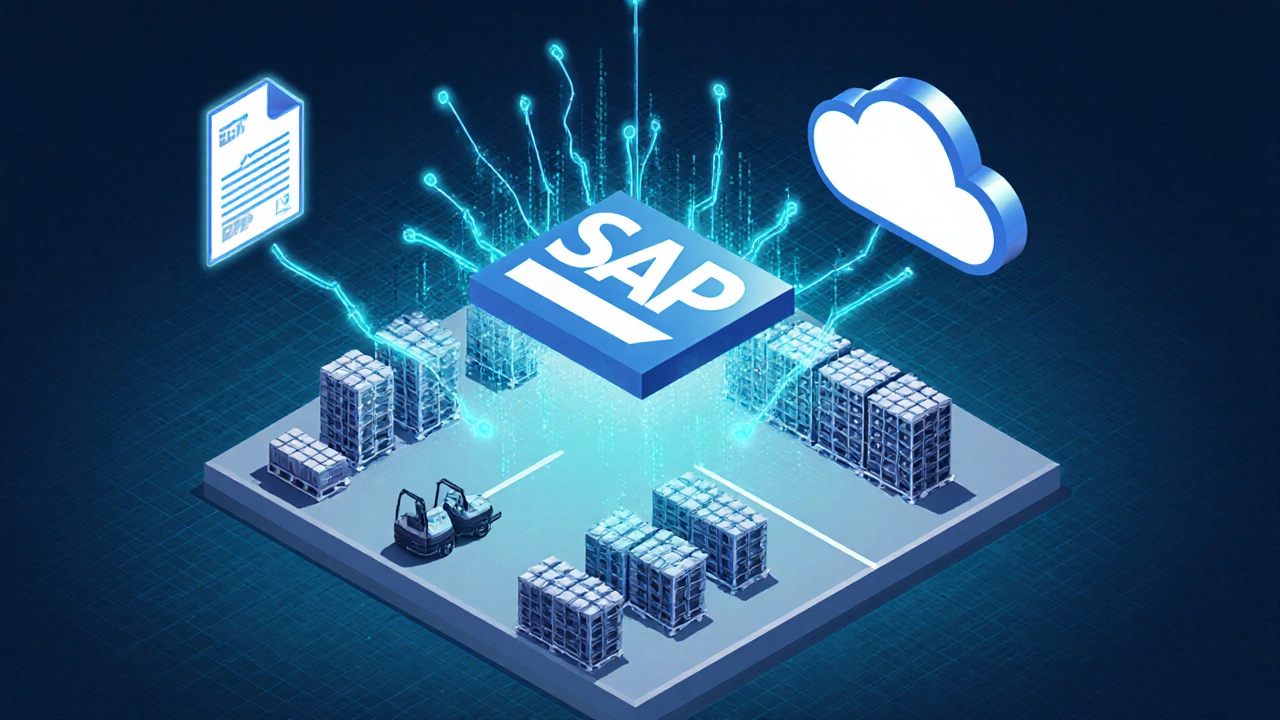SAP EWM – Your Hub for Modern Warehouse Management
When working with SAP EWM, SAP’s Extended Warehouse Management module, designed to control and optimize warehouse operations from inbound to outbound. Also known as Extended Warehouse Management, it integrates tightly with other SAP solutions to provide real‑time inventory visibility and process automation.
At its core, SAP EWM is a type of Warehouse Management System, software that coordinates storage, picking, packing and shipping tasks across complex distribution networks. This warehouse management system brings together location control, labor management and advanced analytics, making it possible to run a high‑speed fulfillment center without a hitch.
How SAP EWM Connects to Logistics and the Wider Supply Chain
The power of SAP EWM shines when you link it to Logistics, the planning and execution of material movement, inventory handling and order fulfillment across all channels. SAP EWM requires seamless data exchange with transportation management, yard management and demand planning tools to keep the whole system in sync. In practice, this means a sales order triggers a warehouse task, which then feeds back into the logistics network for carrier selection and delivery scheduling.
Beyond logistics, SAP EWM sits inside the broader Supply Chain, the end‑to‑end flow of goods, information and finances from supplier to customer. By feeding real‑time stock levels into supply‑chain planning, EWM helps companies adjust production schedules, reduce safety stock and avoid costly stock‑outs. In short, SAP EWM enables a more responsive and lean supply chain.
Digital transformation has birthed e‑logistics, where cloud platforms, IoT sensors and AI drive smarter decisions. SAP EWM is built for this era: it can ingest RFID tag data, automate replenishment based on predictive analytics, and expose APIs for third‑party fulfillment services. The result is faster order processing, lower labor costs and higher customer satisfaction.
Implementing SAP EWM isn’t just a software install; it’s a change in how warehouse teams work. Integrating with SAP S/4HANA, SAP’s next‑generation ERP suite ensures that financials, procurement and production data flow directly into the warehouse execution layer. This tight coupling eliminates duplicate data entry and provides a single source of truth for inventory valuation and cost accounting.
When done right, the benefits stack quickly: reduced order‑to‑ship times, higher pick accuracy, better space utilization, and the ability to scale operations for peak seasons without hiring a permanent workforce. Companies that leverage SAP EWM’s advanced slotting and wave planning see up to a 20% boost in throughput while cutting labor hours.
Looking ahead, AI‑driven decision support, autonomous robots and blockchain‑based traceability are set to reshape warehouse management. SAP EWM’s flexible architecture is already compatible with these emerging techs, giving early adopters a clear roadmap to stay ahead of the curve.
Below you’ll find a curated collection of articles that dig deeper into these topics – from cost breakdowns of walk‑in showers (a reminder that smart design helps any space) to the latest rankings of logistics giants, and practical tips on speeding up courier deliveries. Whether you’re just starting with SAP EWM or looking to fine‑tune an existing setup, the posts ahead offer real‑world insights you can put to work today.
Learn what SAP stands for, explore its warehouse modules, compare WM vs. EWM, and get a step‑by‑step guide to implementing SAP in any distribution center.
Oct, 23 2025
